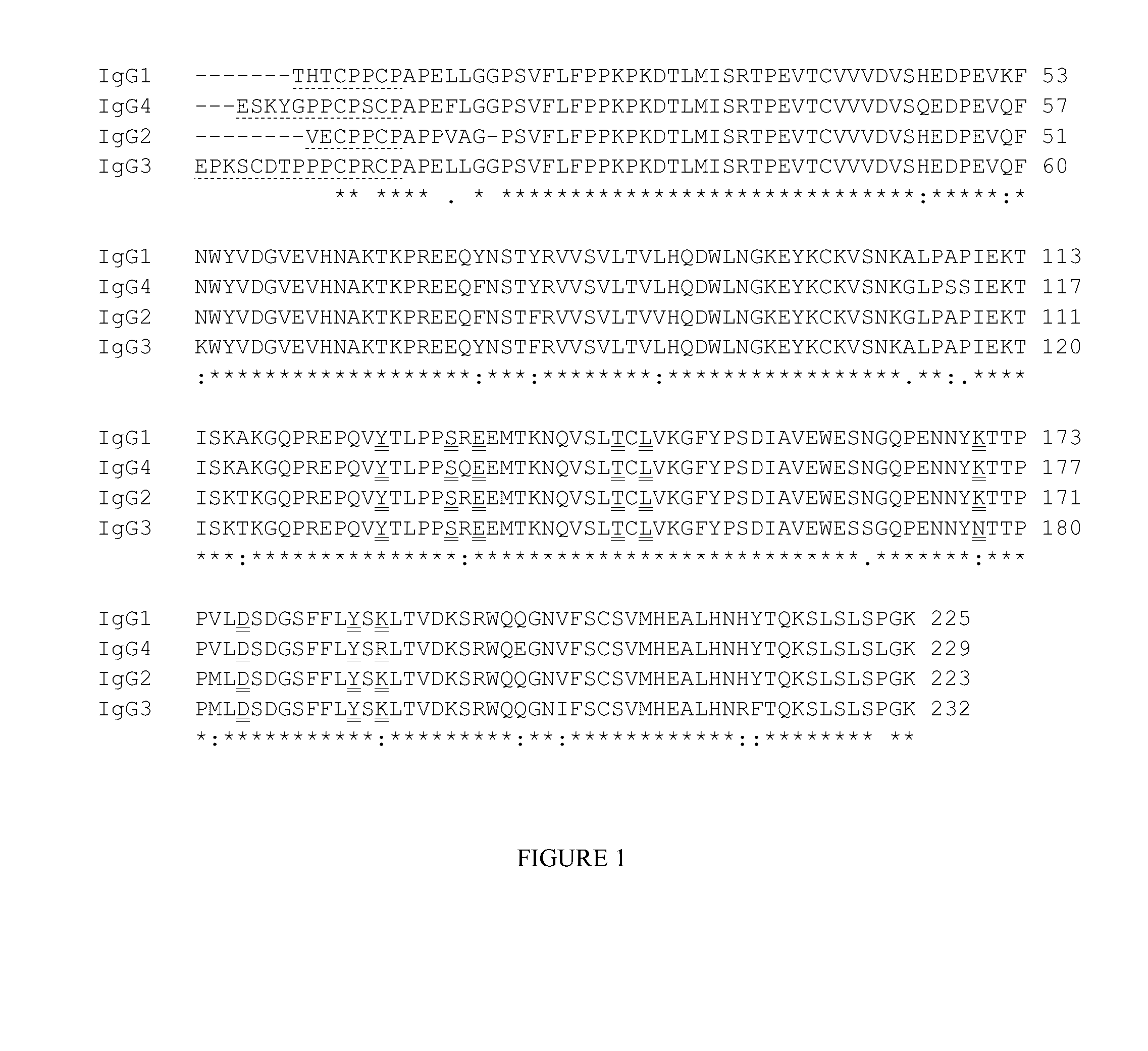Follistatin-related fusion proteins and uses thereof
a fusion protein and fusion protein technology, applied in the field of transforming growth factor (tgf), can solve the problems of difficult use as therapeutic agents, and achieve the effects of improving purification properties, high affinity binding and inhibition, and improving production in recombinant cell lines
- Summary
- Abstract
- Description
- Claims
- Application Information
AI Technical Summary
Benefits of technology
Problems solved by technology
Method used
Image
Examples
example 1
Generation of a Single-Arm WFIKKN2 Polypeptide Fusion Protein
[0183]Applicants generated a soluble asymmetric Fc fusion protein in which native full-length human WFIKKN2 polypeptide was attached through a linker to one of two human G1Fc chains.
[0184]A methodology for promoting formation of WFIKKN2-Fc heteromeric complexes, as opposed to WFIKKN2-Fc homodimeric complexes, is to introduce alterations in the amino acid sequence of the Fc domains to guide the formation of asymmetric heteromeric complexes. Many different approaches to making asymmetric interaction pairs using Fc domains are described in this disclosure.
[0185]In one approach, illustrated in the polypeptide sequences of SEQ ID NOs: 57 and 58, one Fc domain is altered to introduce cationic amino acids at the interaction face, while the other Fc domain is altered to introduce anionic amino acids at the interaction face. In this example, correct pairing of the two polypeptide chains is promoted through a charge-based mechanism ...
example 2
Potency of a Single-Arm WFIKKN2 Polypeptide Fusion Protein
[0199]A reporter gene assay in A204 rhabdomyosarcoma cells was used to evaluate the ability of full-length human WFIKKN2 polypeptide variants to inhibit myostatin signaling. This assay is based on a human rhabdomyosarcoma cell line transfected with a pGL3(CAGA)12 reporter plasmid [Dennler et al (1998) EMBO 17:3091-3100] as well as a control Renilla reporter plasmid (pRL-CMV) to normalize for transfection efficiency. The CAGA12 motif is present in TGFβ-responsive genes such as plasminogen activator inhibitor type 1, so this vector is of general use for factors signaling through Smad2 and Smad3.
[0200]On the first day of the assay, A204 cells (ATCC® HTB-82) were distributed in 48-well plates at 105 cells per well and incubated overnight in McCoy's 5A growth medium (Life Technologies) supplemented with 10% FBS. All incubations were at 37° C. with 5% CO2 unless otherwise noted. On the second day, a solution containing 10 μg pGL3(C...
PUM
| Property | Measurement | Unit |
|---|---|---|
| molecular weights | aaaaa | aaaaa |
| temperature | aaaaa | aaaaa |
| temperature | aaaaa | aaaaa |
Abstract
Description
Claims
Application Information
 Login to View More
Login to View More - R&D
- Intellectual Property
- Life Sciences
- Materials
- Tech Scout
- Unparalleled Data Quality
- Higher Quality Content
- 60% Fewer Hallucinations
Browse by: Latest US Patents, China's latest patents, Technical Efficacy Thesaurus, Application Domain, Technology Topic, Popular Technical Reports.
© 2025 PatSnap. All rights reserved.Legal|Privacy policy|Modern Slavery Act Transparency Statement|Sitemap|About US| Contact US: help@patsnap.com



